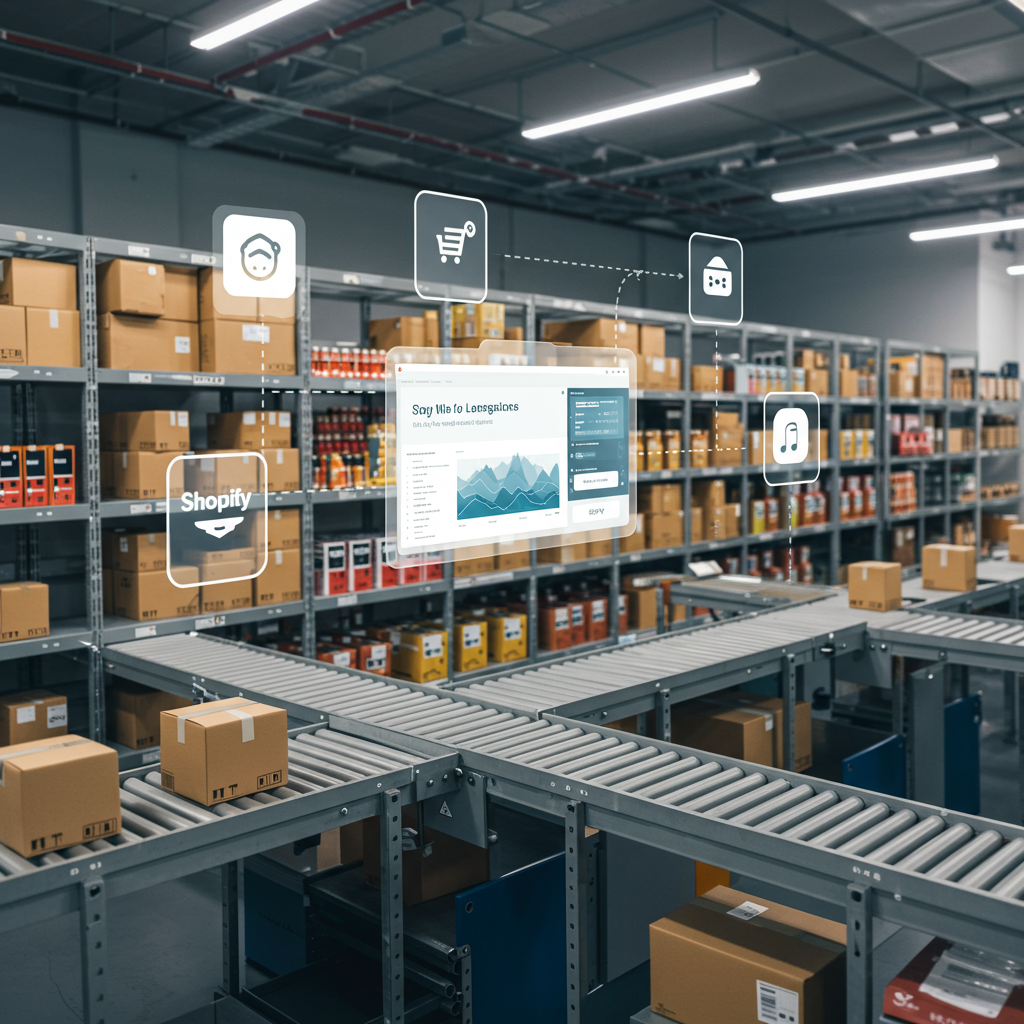Discover how to transform your Shopify store’s efficiency by automating order processing, inventory, and shipping, freeing you to focus on growth.
As a Shopify merchant, you know that managing orders, inventory, and shipping can quickly become overwhelming, especially as your business grows.
The daily grind of manual fulfillment tasks can eat into your valuable time, diverting focus from strategic growth initiatives like marketing and product development.
That’s why I’m here to share my insights on how to effectively automate fulfillment in Shopify, transforming your operational efficiency and freeing you up to scale.
Automating your fulfillment process isn’t just about saving time; it’s about reducing errors, improving customer satisfaction, and ultimately, boosting your bottom line.
Imagine a world where orders are processed, shipping labels are generated, and tracking information is sent to customers, all without you lifting a finger.
This isn’t a pipe dream; it’s an achievable reality for any Shopify store, regardless of its size.
The core idea behind fulfillment automation is to leverage technology to handle repetitive, rule-based tasks that are typically part of the order-to-delivery cycle.
Let’s dive into the specific areas where automation can make the most significant impact on your Shopify store.
First up is **Order Processing**. This involves everything from receiving an order to marking it as fulfilled.
Automation can ensure that once an order is placed, it’s immediately routed to your fulfillment system, whether that’s an in-house team, a 3PL, or a dropshipping supplier.
Next, consider **Inventory Management**. Keeping accurate stock levels is crucial to prevent overselling or stockouts.
Automated systems can update inventory counts in real-time across all your sales channels, trigger low-stock alerts, and even reorder products automatically when thresholds are met.
**Shipping Label Generation** is another prime candidate for automation. Manually creating labels is tedious and prone to errors.
Automated solutions can pull order details directly from Shopify, generate the correct shipping labels, and even choose the optimal shipping method based on predefined rules.
**Tracking Number Updates and Customer Notifications** are vital for a positive post-purchase experience.
Automation ensures that customers receive timely updates with their tracking numbers, reducing “Where’s my order?” inquiries and building trust.
Even **Returns Management** can be streamlined. Automated return portals can guide customers through the process, generate return labels, and update inventory upon receipt.
Now, how do we achieve this automation? There are several powerful tools and strategies at your disposal.
**Shopify’s Built-in Features** offer a good starting point. You can set up shipping profiles, manage fulfillment locations, and use basic order fulfillment workflows.
For more advanced automation, **Shopify Apps** are your best friends. The Shopify App Store is brimming with solutions for every aspect of fulfillment.
Look for apps specializing in order management, inventory sync, shipping automation (like ShipStation or ShippingEasy), and even comprehensive fulfillment platforms.
**Third-Party Logistics (3PLs)** are an excellent option if you want to outsource your entire fulfillment process.
When integrated with Shopify, a 3PL can automatically receive your orders, pick, pack, and ship them, handling all the logistics on your behalf.
For dropshippers, **Dropshipping Automation Tools** are essential. These apps can automatically import products, sync inventory, and send orders directly to your suppliers.
Tools like Zapier or Make (formerly Integromat) also allow you to create custom automations between Shopify and virtually any other service, offering incredible flexibility.
So, how do you get started? First, **Assess Your Current Workflow**. Identify the most time-consuming and error-prone manual tasks.
Next, **Identify Bottlenecks**. Where do delays occur? What tasks are preventing you from scaling?
Then, **Choose the Right Tools or Partners**. Research Shopify apps, 3PLs, or custom integration solutions that align with your specific needs and budget.
**Set Up Integrations Carefully**. Follow the instructions provided by the app or service, ensuring all connections between Shopify and your chosen tools are robust.
**Test Thoroughly**. Before going live, run test orders to ensure everything is working as expected, from order receipt to tracking notification.
Finally, **Monitor and Optimize**. Automation isn’t a set-it-and-forget-it process. Regularly review your automated workflows and make adjustments as your business evolves.
The benefits of embracing fulfillment automation are truly transformative. You’ll experience significant time savings, allowing you to focus on growth.
You’ll also see a reduction in operational costs due to increased efficiency and fewer manual errors.
Accuracy will improve dramatically, leading to happier customers and fewer returns due to incorrect shipments.
Most importantly, automation provides the scalability you need to grow your Shopify store without being bogged down by logistics.
It empowers you to handle increased order volumes seamlessly, ensuring your business can expand without hitting a fulfillment ceiling.
What do you think about the potential of automating your Shopify fulfillment? I’d love to hear your thoughts and experiences!
In conclusion, automating fulfillment in Shopify is no longer a luxury; it’s a necessity for any merchant aiming for sustainable growth and operational excellence.
By strategically implementing automation across your order processing, inventory, and shipping, you can build a more resilient, efficient, and profitable e-commerce business.
Start small, identify your biggest pain points, and gradually introduce automation. Your future self, and your customers, will thank you for it.






